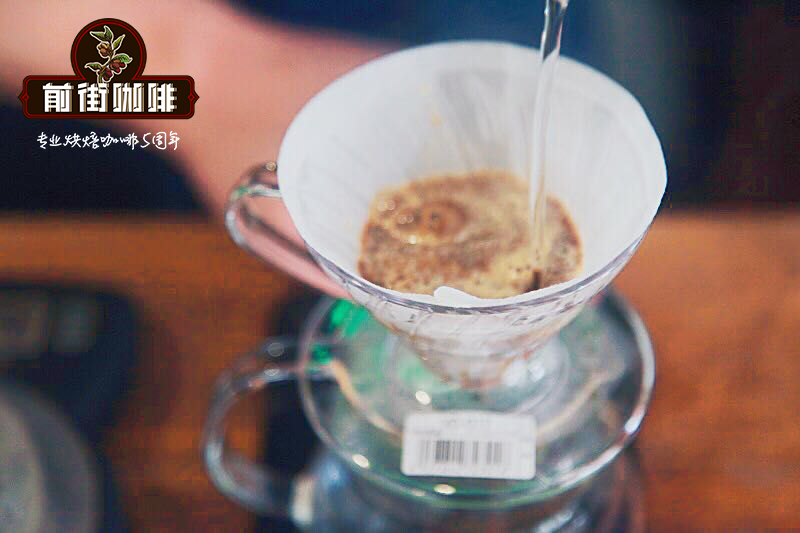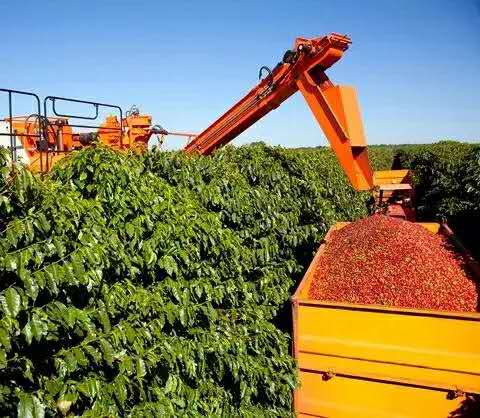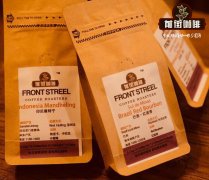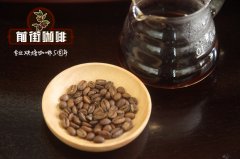Bahia, Brazil| Bahia's three major coffee producing regions

Brazil's fifth largest state, Bahia, is located in the northeast of the country, 1000 kilometers from the coastline, with high elevations and a warm climate. Most of the coffee we buy from Bahia comes from the Chapada Diamantina region. Farms in the area vary in size-from small farms run by small families to vast estates with 1000 hectares or more of coffee.
There are three producing areas in Bahia:
CHAPADA DA DIAMANTINA
The mountains of Chapada das Diamantinas are located in the heart of Bahia, contributing directly to the delightful mountain experience. The region began to become famous internationally, not only for its beautiful scenery, but also for its delicious food and special coffee.
This coffee has a unique and smooth taste, with flavors of molasses, lemon and red berries, with moderate acidity and rich aromas. The exclusive mixture from this area is a combination of coffee beans and different roasting levels. Cafe Terroa from Piata County has created three types, namely Sol Amarelo, Terra Vermelha and Vento Forte.
Each has sensory characteristics, please identify the taste. In order to achieve this result, many growers work on a manual basis. Coffee from Piata, one of the highest counties in the northeast, has won many awards and won several championships in Bahia. In 2009, they won the Brazilian championship in the industry's most prestigious Cup of Excellence Cup, which is also held in other coffee-producing countries around the world. In 2011, the county ranked second in coffee production, surpassing growers in other traditional parts of Brazil.
Ideal climate
The production of high-quality coffee is mainly due to its mild and dry climate and an altitude of about 1100 to 1500 meters. Altitude is the main natural factor to control the quality of coffee beans. The higher the altitude, the more fragrant and rich in sugar and natural acid.
Each area has farms at higher elevations, like major county producers such as Mucuge, Piata Ibicoara and the Vale do Capao district in Palmeras.
Serrado CERRADO BAHIANO
Coffee in western Bahia appeared in the mid-1990s, when a Portuguese coffee farmer with rich experience in irrigation production in Angola believed that Arabica coffee would be successful under local conditions.
In addition to the story of this discovery, today's event focuses on 15000 hectares of irrigated area of 36 growers.
The area is located at the westernmost tip of Bahia State, and the county's producers are divided into the states of Tocantine, Goas and Minas Gerais, mainly Barrera, Louis Educardo Magar, San Desidrio and Coco. The contours of these production areas are easy to determine because they are located in the Serrado area with completely flat terrain and special climatic conditions.
The annual average temperature changes little, the average temperature is about 23 ℃, the sunshine is strong, and the average height is 800m. Rainfall is concentrated at 1500 mm between October and April, so it can be harvested without rain.
As a result, the average yield of Arabica coffee in western Bahia is 45 bags per hectare. This figure is the result of 100% automated irrigation, coupled with the high technical standards of production, and large machinery is used in planting.
Good management will also bring very good success. In order to keep up with this mode of production, there is an entrepreneur image of a grower. Most coffee growers from other parts of Brazil have inherited successful experiences, broadening their horizons for the nearest coffee plantation.
In this way the differences in the region interact with the use of high technology and machinery regular producers and large quantities of coffee obtained in a very clear geographical area. Capable producers have adapted to innovation, which helps to configure coffee plantations in western Bahia.
The value of the coffee market in this region lies in the appearance of the coffee drink, which has smooth fruit aroma, good sweetness, low acidity and commercial safety in the face of low production risk.

Pranalto da Bahia PLANALTO DA BAHIA
In 1971, the first coffee trees were planted in the Bahia Plain in southeastern Brazil. Today, there are 2500 coffee growers in the region, including a cooperative with 240 partners and an association (ASCCON).
In this area, washed coffee produced by small growers is either semi-washed or produced naturally in a 19-hectare harvest area using appropriate technology. There are also high-end growers producing more than 50 bags per hectare. Southwest Bahia is characterized by selective picking of fine coffee at a height of 900 meters. The market value of coffee in this area is full-washed, exquisite cup, mellow, sweet and positive acidity.
Important Notice :
前街咖啡 FrontStreet Coffee has moved to new addredd:
FrontStreet Coffee Address: 315,Donghua East Road,GuangZhou
Tel:020 38364473
- Prev

How to brew moderately roasted Brazilian coffee beans in Brazil, the world's largest coffee producer?
Brazil is the world's major producer and exporter of coffee beans, coffee beans taste mellow, is a typical deep-roasted coffee beans. About 1/3 of the world's coffee comes from Brazil, and most of the premium coffee in Brazil is labeled Santos after passing through the port. Altitude range: 400-1600 m above sea level harvest season: may-September annual coffee output: 4000-60 million bags
- Next

Introduction to the origin of Serrado coffee in Brazil | what are the characteristics of coffee cultivation in Cerrado producing areas
The word Cerrado refers to the savanna, and although it can refer to the prairie that stretches through several Brazilian states, it refers to the Serrado district in the western state of Minas Gerais on coffee. Cerrado coffee is usually clean, has a good body (creamy taste), low acidity, balanced, and may show nutty or even caramel flavor, or even malt, when lightly roasted.
Related
- Detailed explanation of Jadeite planting Land in Panamanian Jadeite Manor introduction to the grading system of Jadeite competitive bidding, Red bid, Green bid and Rose Summer
- Story of Coffee planting in Brenka region of Costa Rica Stonehenge Manor anaerobic heavy honey treatment of flavor mouth
- What's on the barrel of Blue Mountain Coffee beans?
- Can American coffee also pull flowers? How to use hot American style to pull out a good-looking pattern?
- Can you make a cold extract with coffee beans? What is the right proportion for cold-extracted coffee formula?
- Indonesian PWN Gold Mandrine Coffee Origin Features Flavor How to Chong? Mandolin coffee is American.
- A brief introduction to the flavor characteristics of Brazilian yellow bourbon coffee beans
- What is the effect of different water quality on the flavor of cold-extracted coffee? What kind of water is best for brewing coffee?
- Why do you think of Rose Summer whenever you mention Panamanian coffee?
- Introduction to the characteristics of authentic blue mountain coffee bean producing areas? What is the CIB Coffee Authority in Jamaica?

